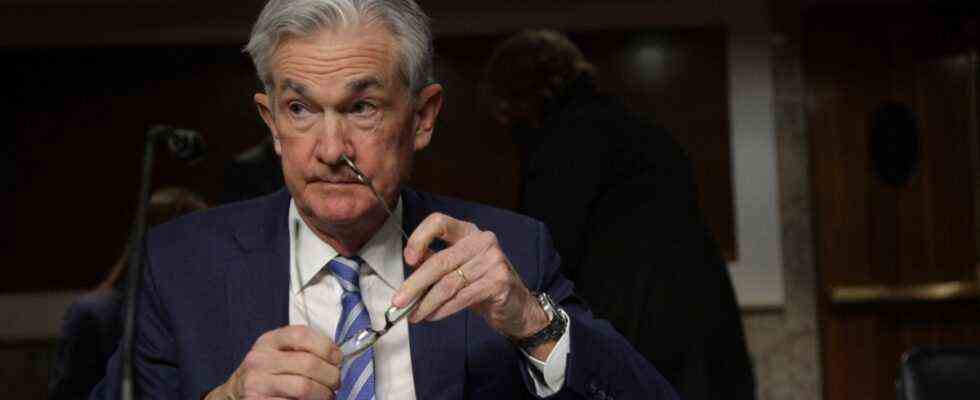Officially, the Omikron variant of the coronavirus has not yet arrived in the USA, but its political force is already beginning to unfold. This became clear on Tuesday at a routine hearing in Congress, at which Federal Reserve Governor Jerome Powell admitted for the first time without any ifs and buts that his agency had underestimated the inflation risks associated with the pandemic and would therefore end its economic support measures more quickly than previously planned. At the same time, he distanced himself from the central bank’s mantra, which had been put forward for months, that the massive rise in consumer prices in the USA was “temporary” in nature. “Now is probably a good time to say goodbye to that term,” said the head of the Federal Reserve (Fed).
Powell’s admission makes it clear how grave the dangers are of any further prolongation of the pandemic. On the one hand, with every new Corona mutant, the risk increases that the economic upswing in the United States, as in other major economies, will stall. At the same time, however, the production and delivery bottlenecks that have played a key role in driving up prices around the world over the past few months also remain. The big central banks, above all the Fed, are thus caught in a dilemma: On the one hand, the economic situation is not yet so stable that a move away from the zero interest rate policy would be possible without any problems. On the other hand, in the USA, for example, the inflation rate has reached 6.2 percent, a level that indicates a much broader problem than previously thought and can no longer be ignored.
The Fed could raise key interest rates as early as the spring of 2022
The Fed chief had long been one of those who wanted to wait for a full recovery in the labor market before tightening monetary policy. At the beginning of November, however, the top Federal Reserve moved away from this maxim for the first time and announced that it would gradually reduce its massive purchases of US government bonds and mortgage-backed securities. With the program, the Fed has been pumping $ 120 billion into the economy month after month since the outbreak of the pandemic in order to keep long-term lending rates low and stabilize the economy. According to previous planning, the purchase price should be reduced by 15 billion dollars per month from November onwards. According to Powell’s most recent statements, however, the exit could now take place much faster and be completed as early as spring 2022. This also raises the question of whether the Fed will possibly begin to raise its most important key interest rate, the overnight target range, again for the first time since 2018 in the first half of next year.
The fact that Powell is being forced to correct course is also due to the fact that the US labor market has developed differently in recent months than many experts expected. It is true that the unemployment rate, which had jumped to more than 15 percent at the beginning of the crisis, has fallen again to 4.6 percent. However, the number of employees is still several million below the level of February 2020. At the same time, there are more than ten million vacancies because, for example, in the hotel and restaurant industry, many people do not apply for fear of Corona. Powell said getting back to pre-pandemic pre-pandemic job market numbers clearly requires a long economic boom. “To get that, we need price stability,” said the Fed chief.
The stock exchanges react to Powell’s speech with massive price fluctuations
The impact of his statements was shown on Tuesday evening on the US financial markets. Stock prices, which had risen from record to record since Powell took office in February 2018, plummeted and short-term interest rates skyrocketed. The dollar also rose massively, while the euro fell correspondingly significantly in value. “That is a very abrupt turn,” said Krishna Guha of the financial advisor Evercore ISI with a view to the statements of the Fed chief. The likelihood that the central bank will now raise interest rates much faster than normal is very high.
However, the matter has not yet been settled. On the one hand, the economic data can change significantly again in the coming months, depending on the course of the pandemic. On the other hand, central bank policy works primarily through raising and lowering key interest rates and a number of other measures to influence the supply of money. At least as important, however, is expectation management – or in other words: as long as companies and financial markets, citizens and trade unions believeTo ensure that the central bank takes inflation seriously and has it under control, no real radical measures at all may be necessary. It cannot be ruled out that Powell’s clear words must also be seen against this background.
The central bank governor will probably not use the word “temporarily” again anytime soon. Or as the Bloomberg news agency put it laconically: “The ‘Temporarily’ team throws in the towel.”

